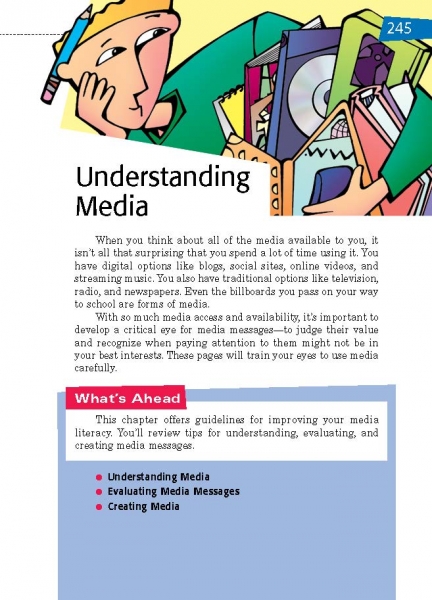Page 245 from

Start-Up Activity
Display the term media saturation and ask for a volunteer to try to define it. (Definition: “The [excessive] amount of media individuals in a society consume and produce.”) Then share this finding from a Kaiser Family Foundation survey:
- Children between the ages of 8 and 18 spend 7 ½ hours per day using media.
- With multitasking, the average jumps to nearly 11 hours.
Ask students how these figures compare to their own media use. Then point out that they are awake for an average of 15 ½ hours per day, so use of media plays a significant role in their daily lives. This chapter will help them understand all of this media.
Think About It
“The biases the media have are much bigger than conservative or liberal. They’re about getting ratings, about making money, about doing stories that are easy to cover.”
—Al Franken

Start-Up Activity
Display the term media saturation and ask for a volunteer to try to define it. (Definition: “The [excessive] amount of media individuals in a society consume and produce.”) Then share this finding from a Kaiser Family Foundation survey:
- Children between the ages of 8 and 18 spend 7 ½ hours per day using media.
- With multitasking, the average jumps to nearly 11 hours.
Ask students how these figures compare to their own media use. Then point out that they are awake for an average of 15 ½ hours per day, so use of media plays a significant role in their daily lives. This chapter will help them understand all of this media.
Think About It
“The biases the media have are much bigger than conservative or liberal. They’re about getting ratings, about making money, about doing stories that are easy to cover.”
—Al Franken


